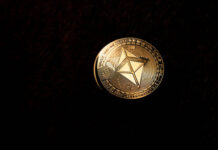There is a pretty strong consensus that the Fed will hike by a quarter of a point at the next meeting. But what could really throw the markets for a loop is what happens after that. Most traders for the moment expect a pause. But recent data shows that there remains a significant amount of price pressures, which could leave the Fed still signaling that more rate hikes could be coming.
The market, on the other hand, is projecting that the Fed will be forced to cut rates later in the year. So, a more dovish statement or messaging from Powell in the post-rate presser would align better with market expectations. Because of the strong consensus for later forecasts, it’s quite likely that any strong reaction to the FOMC decision would fade relatively quickly.
What are the options?
The preferred measure of inflation for the Fed is the core PCE change. That has remained consistent since December of last year at, or slightly above, 4.6%. That’s more than double the target of 2.0%, but more importantly, it’s not coming down. Meaning that the Fed can interpret it as there is a need for more hiking to get inflation back in line.
What the Fed fears the most at the current juncture is initiating a pause, and then seeing inflation rise again. Which would force them to raise rates at a faster pace to control inflation. They would see this as losing “credibility” in the fight against inflation. The Fed believes that inflation is controlled by expectations, so pausing at the “wrong” time is a major concern. That could incline the scales in favor of another rate hike and keep the door open for rate hikes after that. But, such a stance would likely be interpreted as “hawkish” by a market that’s pricing in a pause followed by rate cuts later in the year.
What about the banking crisis?
Higher rates are seen as the genesis of the current banking crisis, and the Fed pausing is seen as a way to assist banks that are struggling with low-yield assets in a high-yield environment. On the other hand, the Fed pausing for that reason could cause another crisis of confidence in the banking system, as it would be interpreted as the regulator knowing something the market does not. So far, the market has taken the second largest bank collapse and the fourth in under two months with relative calm.
The other factor, as explained previously, is that the banking crisis has the effect of tightening monetary policy. Which means that the Fed is under less pressure now to raise rates, and might be able to control inflation without taking action. This is the reason cited by the small number of people who argue that the Fed might pause at the next meeting.
Powell will be asked about the banking situation during the post-rate decision press conference if he doesn’t address it in his prepared remarks. How much weight that has in the FOMC decision is likely to be the determinant factor for whether traders start pricing in another hike for June. The less talk about the banking situation, the more likelihood of another hike. The more talk of the banking situation, the more likely traders will expect cuts later in the year.













